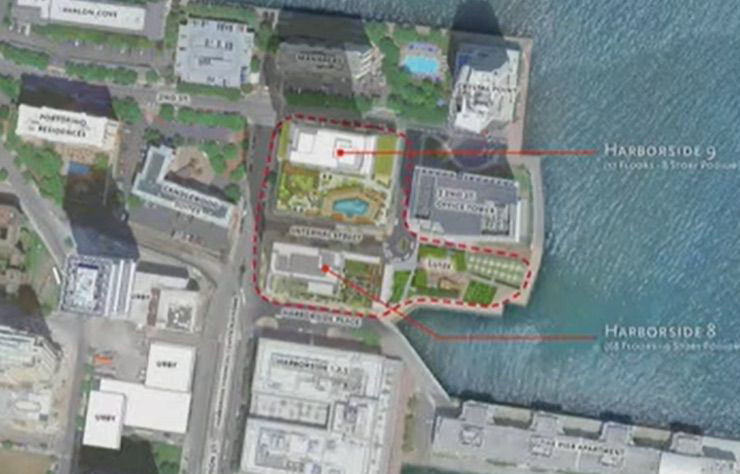News:
Brokerage
Posted: April 14, 2009
Mark and Elizabeth Straus lead downtown renovation progress on Broadway, Saratoga Springs
Broadway in 1971 was a very different place than we know today. The 1950s and 1960s saw the movement away from downtowns to the suburbs and shopping centers. The core business districts throughout the Capital Region suffered from increased vacancies, crime and deterioration. Customers and restaurant goers fled to the malls while commercial offices chose new buildings with attached parking away from the downtowns.
As with every problem there are potential opportunities. Rents downtown and the values of buildings were low. Many of the old businesses were ready to retire. The owners of commercial real estate on Broadway were anxious to sell their buildings rather than fix them up after many years of neglect.
The 1970s also saw the creation of a local community effort to save and restore these architecturally important buildings. Local citizens, political leaders, and businesses joined together to come up with a plan for raising funds to support façade renovations, ongoing streetscape maintenance, and marketing for Broadway. Property owners agreed to a special assessment tax that was used to pay off a bond and the proceeds of the bond funded façade restorations, Victorian streetlamps, flower plantings, snow removal and marketing to promote it all.
The 1970s also saw the formation of the Saratoga Springs Preservation Foundation. Building owners deeded easements to the Preservation Foundation in exchange for the funds to renovate their façades. Owners also committed to maintaining the façades for 25 years.
It was in this environment that Mark and Elizabeth Straus began their retail business and the renovating of historic buildings on Broadway. Three years after successfully opening Mabou in 1971, their store featuring imported home furnishings, clothing and gifts, they expanded to a larger store at 460-462 Broadway. The building next door at 464-468 Broadway became available and the Strauses purchased the building with mayor Raymond Watkin and attorney Douglas Ward.
Over the next three decades the Straus' purchased several other buildings on the key shopping block at the center of the downtown area with partner Thomas Gardner. Their strategy was always the same:
1. Stabilize the building, replacing worn out roofs, upgrading mechanical systems, and repairing stonework, brickwork and mouldings.
2. Look for locally owned, owner -operated businesses. Local owners understand the needs of the local market.
3. Commitment to improving the space.
The block between Caroline St. and Lake Ave. is considered to be the center of town. The vacancy rates for these buildings has always been close to zero. The Broadway buildings include:
* 438-444 Broadway: Standing at the corner of Caroline St. and Broadway, this building houses three restaurants, two stores and several offices. Demand for space in this 23,580 s/f building has always been great.
* 446 Broadway: Housing a popular jewelry store plus four renovated apartments and offices, this building is always rented. The 7,176 s/f building contains new individual heating systems, separate utilities and a new roof.
*454 Broadway: The Marketplace has 16 stores and is always fully rented. At the center of this block, the 20,304 s/f building features new individual heating systems and separate utilities.
* 460-462 Broadway: This section of the building has 2,700 s/f on each of the floors (a total of 10,800 s/f), providing one of the largest first floor spaces on the block. The roof is new, as are the air conditioning and second floor heating system. Current leases for property, built in 1871, are short-term. The basement provides lots of storage and has an entrance onto the rear service alley. The third floor could be refinished into a Manhattan-style loft apartment.
* 464-468 Broadway: This section of the 18,000 s/f building houses Mrs. London's Bakery and the new Max London's restaurant. The second and third floors are rented as apartments. The building has its own service elevator and a new roof. The heating, air conditioning, electrical and plumbing systems are all new.
Capitalizing on all of its assets, this small town has the right mix to bring in a variety of visitors. Skidmore College attracts those in pursuit of higher education while the City Center (the city's convention center) draws convention and event goers.
Tags:
Brokerage
MORE FROM Brokerage
Berger and Koicim of Marcus & Millichap sell 17-unit multi-family for $8.8 million
Manhattan, NY Marcus & Millichap negotiated the sale of 207 E. Fourth St., a 17-unit mixed-use multi-family property the East Village. The asset sold for $8.8 million. “This transaction underscores

Columns and Thought Leadership

Behind the post: Why reels, stories, and shorts work for CRE (and how to use them) - by Kimberly Zar Bloorian
Let’s be real: if you’re still only posting photos of properties, you’re missing out. Reels, Stories, and Shorts are where attention lives, and in commercial real estate, attention is currency.

AI comes to public relations, but be cautious, experts say - by Harry Zlokower
Last month Bisnow scheduled the New York AI & Technology cocktail event on commercial real estate, moderated by Tal Kerret, president, Silverstein Properties, and including tech officers from Rudin Management, Silverstein Properties, structural engineering company Thornton Tomasetti and the founder of Overlay Capital Build,

Strategic pause - by Shallini Mehra and Chirag Doshi
Many investors are in a period of strategic pause as New York City’s mayoral race approaches. A major inflection point came with the Democratic primary victory of Zohran Mamdani, a staunch tenant advocate, with a progressive housing platform which supports rent freezes for rent

Lasting effects of eminent domain on commercial development - by Sebastian Jablonski
The state has the authority to seize all or part of privately owned commercial real estate for public use by the power of eminent domain. Although the state is constitutionally required to provide just compensation to the property owner, it frequently fails to account








.jpg)

.gif)